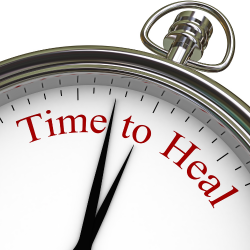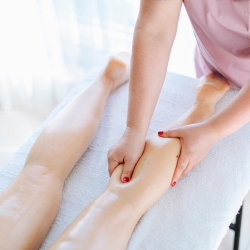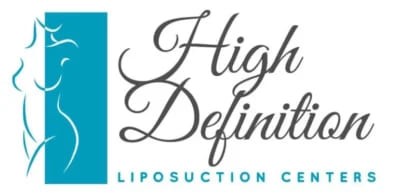Introduction: Liposuction Healing Time
Liposuction healing time is determined by three factors that include preoperative preparation, operative maneuvers completed, and compliance with postoperative instructions. These three components will ultimately affect your liposuction recovery and are elaborated on below.
Preoperative preparation
Preoperative preparation efforts that will affect your healing time include optimizing your nutrition, eliminating blood thinners, and avoiding smoking. Optimizing your nutrition requires increasing your protein intake has two effects on your liposuction healing time. First, increasing your protein intake will ensure that your body has the building blocks to lay down collagen. Collagen is the essential molecule that heals tissue and incision lines. Second, increasing protein intake will increase your blood protein, called albumin.
High albumin in your bloodstream will result in minimizing leakage of plasma fluid from your blood vessels. The less leakage of plasma fluid, the less swelling and quicker healing you will experience. Eliminating blood thinners is critical so that you don’t ooze blood into your soft tissues.
The less blood you ooze into your soft tissues, the less pain you will experience, and the less risk of hyperpigmentation from the staining effect of hemosiderin in your blood. Avoiding smoking is a critical component of liposuction since nicotine will contract microvessels and limit the delivery of oxygen and nutrients to your skin cells. Since liposuction results in irritation and compromise of microvessels, the added insult of nicotine will surely result in skin compromise and possible necrosis.

Extent of Liposuction
The more involved your liposuction surgery, the more irritation to your soft tissues. The more irritation to your soft tissues, the more liposuction healing time is required to get you back to your normal physical activities. This is most appreciated by patients undergoing liposuction 360, where liposuction is performed circumferentially which may include 40% of your body surface. Others may require excisional surgery to tighten the skin simultaneously with the removal of fat. Surgical incision lines add to the healing times as collagen molecules must traverse the incision line and heal across soft tissue divisions.
Compliance with postoperative instructions
Compliance with post-operative instructions is critical to a quick liposuction healing time. Measures that must be followed include strict wearing of compression garments, serial lymphatic massages, continued intake of a high protein diet, continued elimination of blood thinners, and continued avoidance of any smoking. Patients are also asked to walk several times a day to avoid the development of vein clots that can lead to a DVT or PE. This complication can be detrimental and delay your healing time.
Liposuction Healing Time: What to Expect During Your Recovery
Liposuction is a popular cosmetic procedure that removes fat deposits from specific areas of the body. While the procedure itself may only take a few hours, the healing process can last weeks or even months. Understanding what to expect during your liposuction recovery is key to ensuring optimal results.
Preparing for Your Procedure
Before undergoing liposuction, there are several things you can do to prep your body and home for the recovery period.
Stop Smoking and Avoid Certain Medications
Smoking and certain medications like aspirin can increase bleeding and complications from surgery. Stop smoking and avoid blood thinners for at least 2 weeks prior to your procedure [1].
Arrange for Help at Home
You will need assistance with daily activities in the first few days after surgery. Make arrangements for a friend or family member to drive you home and stay with you for at least the first night [2].
Stock Up on Supplies
Having supplies like gauze, loose comfortable clothing, and over-the-counter pain medication on hand will make recovery more convenient [3].

What to Expect During Recovery
The liposuction healing timeline can be broken down into three main phases:
Early Recovery (First 48 Hours)
Right after surgery, you will experience swelling, bruising, and discomfort at the treatment sites. Use cold compresses and keep the areas elevated to reduce swelling [4]. Take any prescribed pain medication as directed. Rest as much as possible.
First Week of Healing
During the first week, you should continue using cold compresses and keep operated areas elevated. Bruising and swelling may worsen during this time before it gets better [5]. Your doctor will likely remove surgical dressings and any drains within 2-7 days after surgery.
Long-term Healing (Weeks to Months)
Swelling should gradually subside within 4-6 weeks though some subtle swelling can remain for 6 months or longer [6]. Bruises will change color and fade. Numbness is common and can persist for several weeks or months. Start easing back into exercise after 2-4 weeks. Results will continue to improve for up to a year.
Factors that Influence Healing Time
Healing time can vary significantly based on several factors:
- Amount of fat removed: More extensive liposuction will require longer recovery.
- Number of treated areas: The more areas treated, the longer it takes to heal.
- Procedure technique: Laser-assisted liposuction may have faster healing than traditional techniques [7].
- Patient age and health: Younger, healthier patients tend to heal faster.
- Compliance with post-op care: Following all doctor’s orders aids healing.
When to Call Your Doctor
Be sure to contact your plastic surgeon if you experience any of the following:
- Fever over 101 F
- Excessive bleeding or fluid leakage
- Intense pain not relieved by medication
- Swelling, redness, warmth or pus at incision sites
- Shortness of breath or chest pain
- Persistent nausea/vomiting
Calling your doctor promptly if complications arise can prevent more serious problems. Most patients who undergo liposuction recover well with minimal side effects.
Conclusion: Be Patient with the Healing Process
Give your body plenty of time to heal after liposuction. While you may see some results immediately, your full liposuction outcomes can take 6 months or more to be fully appreciated. Don’t get discouraged if your recovery is taking longer than expected. Follow your doctor’s post-operative instructions closely to ensure you heal your best.
Conclusion: Liposuction Healing Time
Liposuction healing time Conclusion In summary, liposuction healing time is affected by multiple factors that extend throughout your liposuction journey. The factors that most affect liposuction recovery time include preoperative preparation, the extent of operative maneuvers, and compliance in the postoperative period.
References
[1] Hædersdal, M., Togsverd-Bo, K., & Wulf, H. C. (2012). Evidence-based review of lasers, light sources, and photodynamic therapy in the treatment of acne vulgaris. Journal of the European Academy of Dermatology and Venereology, 26(3), 267-278.
[2] Mordon, S., Cartotto, R., Chajchir, A., Erthal, V., & Fabi, S. (2022). Place of lasers and energy-based devices in scar management: review and expert recommendations. Lasers in medical science, 37(2), 315-332.
[3] Fabi, S. G. (2015). Noninvasive skin tightening: focus on new ultrasound techniques. Clinical, cosmetic and investigational dermatology, 8, 47.
[4] Sasaki, G. H. (2014). Laser treatment for dark skin problems. Facial Plastic Surgery Clinics of North America, 22(4), 565-577.
[5] Tierney, E. P., Hanke, C. W., & Fournier, N. (2011). Ablative fractionated CO2, laser resurfacing for the neck: prospective study and review of the literature. Journal of drugs in dermatology: JDD, 10(7), 731-736.
[6] Graber, E. M., Tanzi, E. L., & Alster, T. S. (2008). Side effects and complications of fractional laser photothermolysis: experience with 961 treatments. Dermatologic surgery, 34(3), 301-307.
[7] Berlin, A. L., Hussain, M., Phelps, R., & Goldberg, D. J. (2008). A prospective study of fractional scanned nonsequential carbon dioxide laser resurfacing: a clinical and histopathologic evaluation. Dermatologic surgery, 34(2), 222-228.

